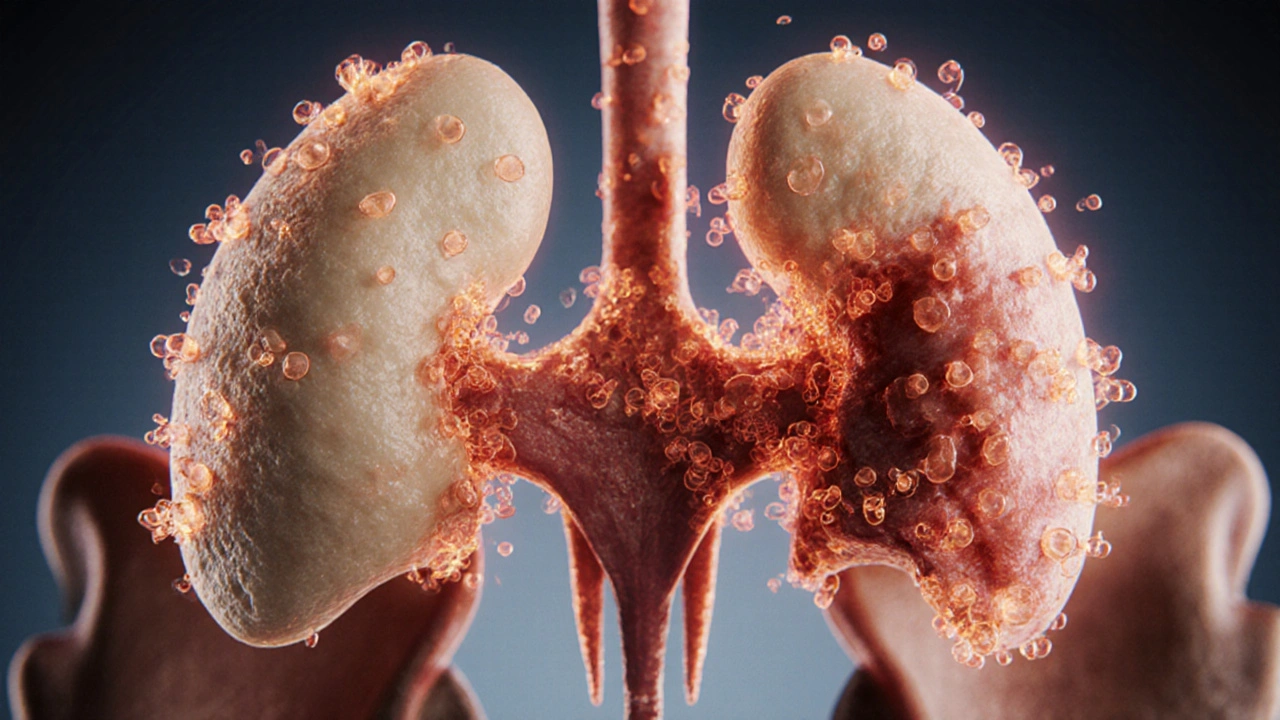Autoimmune Adrenalitis: Causes, Symptoms, and Treatment Options
When dealing with autoimmune adrenalitis, a condition where the immune system attacks the adrenal cortex, reducing hormone output. Also known as autoimmune Addison's disease, it often overlaps with Addison's disease, primary adrenal insufficiency caused by gland destruction. Managing this disease typically requires glucocorticoid therapy, daily replacement of cortisol to mimic natural hormone rhythms, which helps keep blood pressure, blood sugar, and immune balance in check.
Why does the body start attacking its own adrenal glands? The core trigger is an autoimmune response that produces antibodies against enzymes like 21‑hydroxylase. These adrenal antibodies, autoimmune markers detected in blood tests signal that the immune system is targeting the cortex. As the cortex deteriorates, cortisol levels drop, leading to fatigue, salt cravings, and low blood pressure. Meanwhile, ACTH (adrenocorticotropic hormone) shoots up because the pituitary tries to stimulate the failing glands, creating a classic high‑ACTH, low‑cortisol pattern.
Patients often notice vague symptoms at first – chronic tiredness, muscle weakness, and inexplicable weight loss. autoimmune adrenalitis can also bring hyperpigmentation, especially on elbows and gums, due to excess melanocyte‑stimulating hormone released alongside ACTH. If left unchecked, a sudden stressor like an infection can trigger an adrenal crisis, marked by severe vomiting, dehydration, and shock. Early identification is crucial, so doctors usually order a basic metabolic panel, cortisol measurement, ACTH stimulation test, and the antibody panel mentioned earlier.
Once diagnosed, the treatment plan centers on hormone replacement. Hydrocortisone or prednisone serve as the mainstay glucocorticoid, while fludrocortisone covers the missing mineralocorticoid (aldosterone) to maintain sodium balance. Dosing mimics the body's natural rhythm: a larger dose in the morning, a smaller one in the afternoon. Patients also need to adjust doses during illness, surgery, or major stress – a concept known as “stress dosing.” Lifestyle tweaks, like a salt‑rich diet, adequate sleep, and regular monitoring of blood pressure, further support stability.
Managing Autoimmune Adrenalitis in Everyday Life
Beyond medication, practical steps can lower the risk of a crisis. Carry a medical alert bracelet that lists the condition and required emergency steroids. Keep a small pack of injectable hydrocortisone handy for severe situations where oral meds won’t absorb. Since many of the articles on our site discuss drug interactions – for example, how NSAIDs or certain antibiotics might affect steroid metabolism – be vigilant about new prescriptions and always ask your pharmacist about potential clashes.
Regular follow‑up appointments allow doctors to fine‑tune hormone doses based on weight changes, blood tests, and symptom feedback. Tracking symptoms in a journal helps spot patterns, like higher fatigue after a late night or during high‑stress periods. Finally, stay informed about emerging research; studies are exploring biologic therapies that could modulate the autoimmune attack itself, offering hope for future treatment options beyond replacement.
Below you’ll find a curated list of articles that dive deeper into medication comparisons, endocrine health tips, and the latest advances in managing autoimmune conditions. Whether you’re looking for a side‑by‑side drug review or a simple guide on handling adrenal insufficiency, this collection offers practical insights you can apply right away.
Addison's Disease and Its Links to Autoimmune Disorders
Explore how autoimmune attacks cause Addison's disease, why it often appears with other autoimmune disorders, and practical steps for diagnosis, treatment, and daily living.
